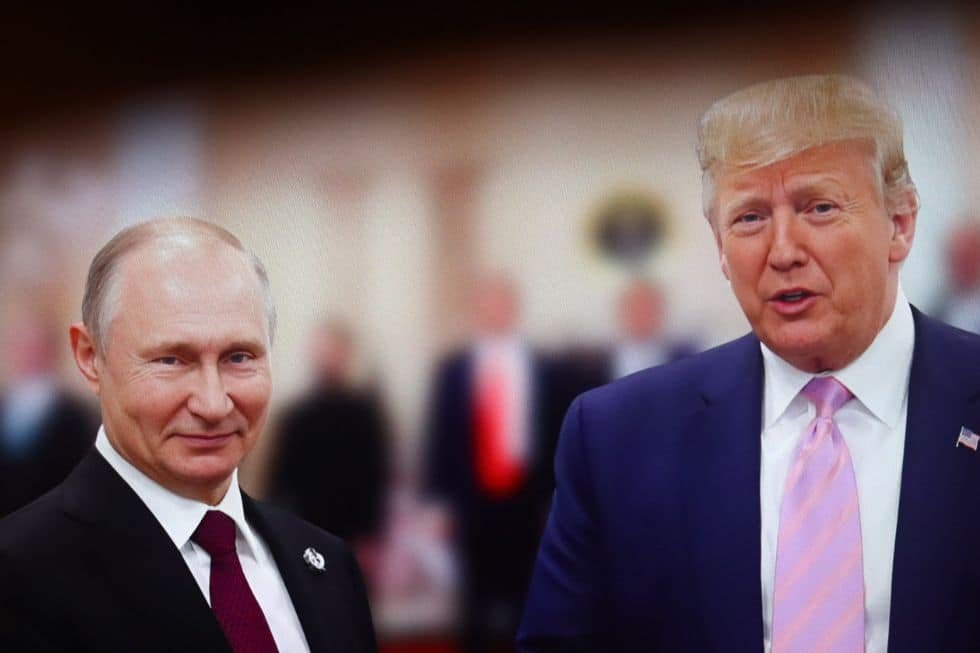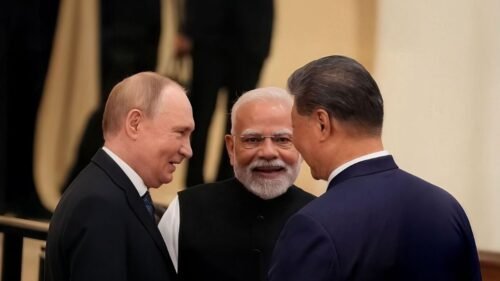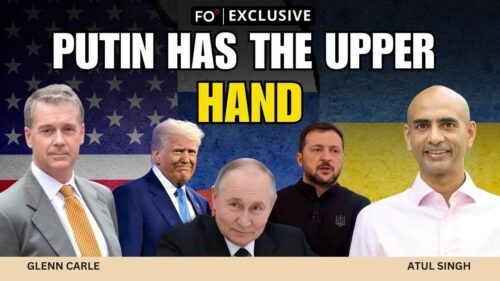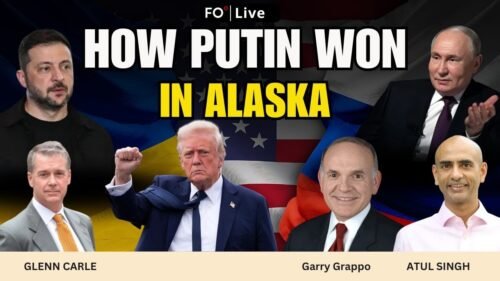The Alaska summit on August 15, between US and Russian leaders to discuss a “peace settlement” to stop Russia’s invasion and torture of Ukraine, was a grotesque farce, but, alas, a substantive success for Russian Tsar — I mean, President Vladimir Putin, and a triumph in US President Donald Trump’s mind.
The White House summit three days later, between American, Ukrainian and European leaders scrambling to remain relevant, pulled an imminent existential catastrophe for Ukraine, NATO and Europe, and triumph for Russia, back to a horrific war with no negotiated solution in view.
They induced Trump to avoid a complete break with Ukraine, and won from the American leader a characteristically vaporous pledge that “we discussed Security Guarantees for Ukraine … provided by the various European Countries, with coordination with the United States of America.”
After Trump’s two nearly disastrous but for now empty exercises in pathological self-regard, Russia emerges diplomatically strengthened and likely to continue its “meat assaults” (sending waves of troops into battle with little regard for casualties) in Ukraine, which have now cost 1.1 million Russian casualties. Ukraine emerges to live and fight another day and season. Europe emerges a bit more coherent and capable of providing for European security and Ukraine’s survival. And the US emerges from Trump’s “very, very large brain” incoherently having aligned with Russia’s maximalist “peace” terms, aligned with Russia’s anti-Western and anti-US positions, yet agreeing to provide (sell) American weapons and materiel to Ukraine to hold off the Russian hordes.
The end to the war that Trump has said he would achieve “within twenty-four hours” has already proven a chimera of the red carpet he rolled out for Putin and a mockery of his berating of Volodymyr Zelensky.
Objectives of the summits
There were five participants at the two summit meetings: Russia, the US, Ukraine, key European members of NATO and Trump’s ego. However, each participant pursued larger, often incompatible objectives than what to do about the war.
Putin sought to end his diplomatic isolation, to improve relations with the US, to advance his view of the “root causes” of the Russia-Ukraine war, to achieve peace on his terms and to undermine the normative system of international relations and replace it with a sphere of interest system in which Russia’s influence would be preponderant in Central Europe. He has a chance to achieve these goals only because Trump has, for decades at least, parroted Russian positions and has a Freudian affinity for strongman Putin.
The US sought to end the war in Ukraine. Under Trump, this has meant aligning US positions with those of Russia and reducing or stopping US material, military and financial support for Ukraine, and weakening the US commitment to NATO.
Ukraine sought to maintain its independence and capability to resist Russia’s invasion, to maintain its critical alliance with the US and to quash any peace settlement that took Ukrainian territory and weakened Ukrainian sovereignty.
The EU and NATO leaders sought to maintain the American commitment to NATO and to stop the US from trying to impose a peace favorable to Russia. Trump sought a peace agreement before having worked out either a US position or a tentative accord among the interested parties. Trump’s primary objective was to focus the world’s spotlight on him, while obliging the world’s leaders to circle his flame. If the result helped his friend Vladimir, so much the better; if it guaranteed Ukraine’s independence, well, alright.
“Results” of the summit
The results of all this primping, bombast, self-delusion and near panic? After three days of a sometimes nauseating Saturnine travesty of international diplomacy, a Ukraine–Russia “peace agreement” for now has joined the receding horizon somewhere over the Donbas, never closer, no matter how many meat assaults Russia makes.
Trump succeeded in holding conferences at which he was the center of attention. Putin succeeded in partially escaping his diplomatic isolation and conceded nothing whatsoever. European leaders succeeded in tenuously holding America’s engagement with NATO and commitment to provide aid to Ukraine. Ukraine succeeded in fighting another day. And the US became more capricious, less trustworthy, more sympathetic to an imperialist dictator and frayed even more the international system over which it has presided for 80 years.
[Newsweek Japan first published this piece.]
[Kaitlyn Diana edited this piece.]
The views expressed in this article are the author’s own and do not necessarily reflect Fair Observer’s editorial policy.
Support Fair Observer
We rely on your support for our independence, diversity and quality.
For more than 10 years, Fair Observer has been free, fair and independent. No billionaire owns us, no advertisers control us. We are a reader-supported nonprofit. Unlike many other publications, we keep our content free for readers regardless of where they live or whether they can afford to pay. We have no paywalls and no ads.
In the post-truth era of fake news, echo chambers and filter bubbles, we publish a plurality of perspectives from around the world. Anyone can publish with us, but everyone goes through a rigorous editorial process. So, you get fact-checked, well-reasoned content instead of noise.
We publish 3,000+ voices from 90+ countries. We also conduct education and training programs
on subjects ranging from digital media and journalism to writing and critical thinking. This
doesn’t come cheap. Servers, editors, trainers and web developers cost
money.
Please consider supporting us on a regular basis as a recurring donor or a
sustaining member.
Will you support FO’s journalism?
We rely on your support for our independence, diversity and quality.









Comment
I cannot help but wonder what happens in the coming months. Russia is now testing Europe on a daily basis. Many European countries have lost cohesion and are vulnerable to Russian intelligence/psy-ops/informational operations.
Russian drones and fighter jets are testing NATO defences as well. This “cheap, deniable and calibrated campaign” is imposing a high economic cost on European countries. The operative question for me is simple: Can an aging Europe with rising debt stand up to a newly assertive Russia?